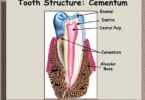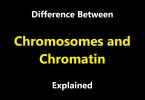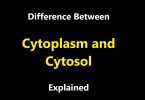Embryogenesis refers to the process of embryo formation and the first layer of cells formed during this stage is called the germ layer. Animals can be differentiated based on these germ layers. The Difference between Diploblastic and Triploblastic is the number of germ layers.
Diploblastic: Definition and Functions.
When gastrulation occurs in diploblastic organisms, the gastrula is made up of only two germ layers. These are ectoderm and endoderm. Diploblastic organisms lack a mesoderm. Endodermis the inner layer that forms the gut while ectoderm is the outer layer and it gives rise to nephridia, epidermal layer, and the nervous tissues. The diploblastic organism does not have a body cavity because they lack mesoderm. There is a non-living layer that resides between the endoderm and ectoderm.
This layer is called mesoglea and is gelatinous in nature. This layer protects the body from shock and mechanical pressure while also lining the gut. The diploblastic organism is more complex than sponges but can still not form organs.
Cnidarians are an example of diploblastic organisms. Other examples include jellyfish and sea anemones. They are radially symmetrical and do not have body organs. An archenteron is present in the center, surrounded by the endoderm and a blastopore is present at its base. They are simple as compared to triploblastic organisms as their whole body is derived only from two germ layers i.e. endoderm and ectoderm.
Triploblastic: Definition and Functions.
Triploblastic organisms are those organisms whose body is derived from three germ layers namely endoderm, ectoderm and mesoderm. Ectoderm forms hair, brain, spinal cord and eye lens etc. Differentiation of mesodermal cells takes place due to interaction of endoderm and ectoderm. Mesoderm gives rise to the coelom which is the body cavity. Since there is a body cavity, these organisms are complex. The organs lie freely in this cavity and they are protected by the fluid that is surrounding them.
This fluid protects the organs against shock and dehydration. Mesoderm is the characteristic feature of higher animals since it gives rise to stomach, liver, colon, lungs, bladder and other organs of the body. Starting from flatworms, all animals are triploblastic with humans being the most supreme example. There are two subcategories of triploblastic organisms; acoelomates and acoelomates. The former lack a true coelom while the latter have a true coelom.
Acoelomates can be further divided based on which opening develops from the blastopore. The organism in which the mouth opening develops from the blastopore is called protostomes while organisms in which anal opening develops from the blastopore are called classified as deuterostomes.
Scientists believe that triploblastic animals were formed from the diploblastic organism and this happened around 600 years ago. There is a Difference between Diploblastic and Triploblastic in terms of body symmetry too.
Summary of Difference Between Diploblastic and Triploblastic:
- Diploblastic animals have two primary germ layers while triploblastic animals develop from three primary germ layers.
- Another Difference between Diploblastic and Triploblastic is that triploblastic animals are bilaterally symmetrical while diploblastic are radially symmetrical.
- Diploblastic animals are simpler with no organs while triploblastic animals have freely moving organs in the body cavity.






Leave a Comment
You must be logged in to post a comment.